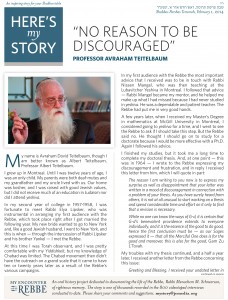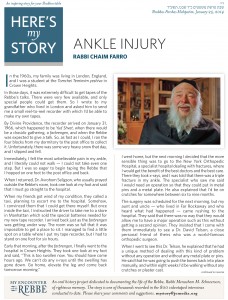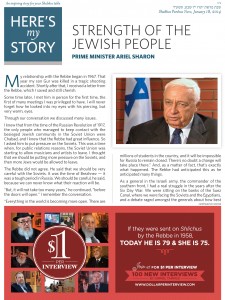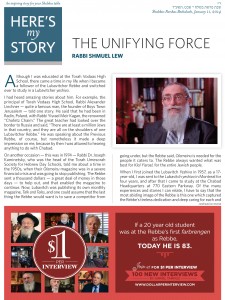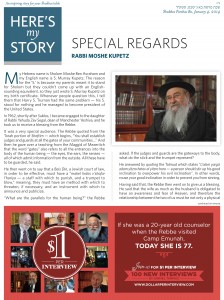HMS: “No reason to be discouraged”
My name is Avraham Dovid Teitelbaum, though I am better known as Albert Teitelbaum, Professor Albert Teitelbaum.
I grew up in Montreal. Until I was twelve years of age, I was an only child. My parents were both deaf-mutes and my grandfather and my uncle lived with us. Our home was kosher, and I was raised with good Jewish values, but I did not receive much of an education in Judaism nor did I attend yeshiva.
In my second year of college in 1957-1958, I was fortunate to meet Rabbi Elya Lipsker, who was instrumental in arranging my first audience with the Rebbe, which took place right after I got married the following year. My new bride wanted to go to New York and, like a good Jewish husband, I went to New York, and this is when – through the intercession of Rabbi Lipsker and his brother Yankel – I met the Rebbe.
At this time I was Torah observant, and I was pretty comfortable with my Yiddishkeit, but my knowledge of Chabad was limited. The Chabad movement then didn’t have the outreach on a grand scale that it came to have ten or twenty years later as a result of the Rebbe’s various campaigns.
In my first audience with the Rebbe the most important advice that I received was to be in touch with Rabbi Nissen Mangel, who was then teaching at the Lubavitcher Yeshiva in Montreal. I followed that advice – Rabbi Mangel became my mentor, and he helped me make up what I had missed because I had never studied in yeshiva. He was a dependable and patient teacher. The Rebbe had put me in very good hands.
A few years later, when I received my Master’s Degree in mathematics at McGill University in Montreal, I considered going to yeshiva for a time, and I went to see the Rebbe to ask if I should take this step. But the Rebbe said no. He thought I should go on to study for a doctorate because I would be more effective with a Ph.D. Again I followed his advice. (more…)


